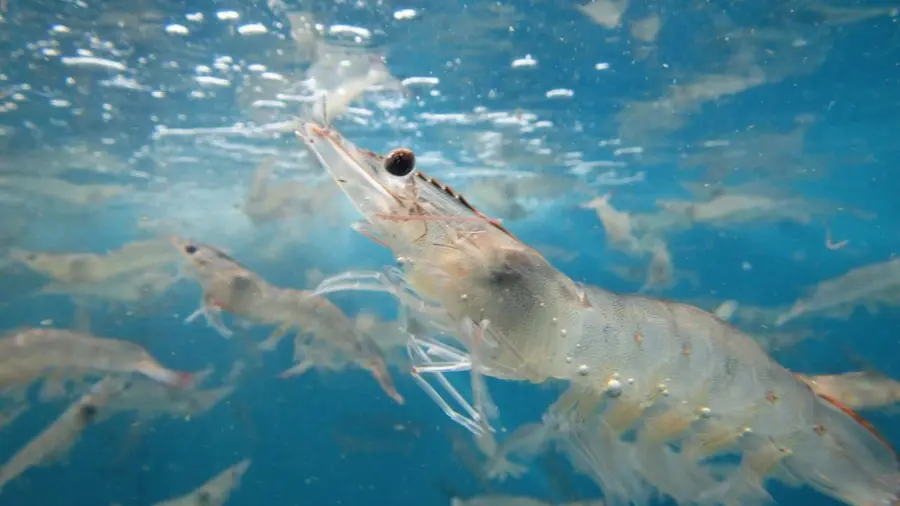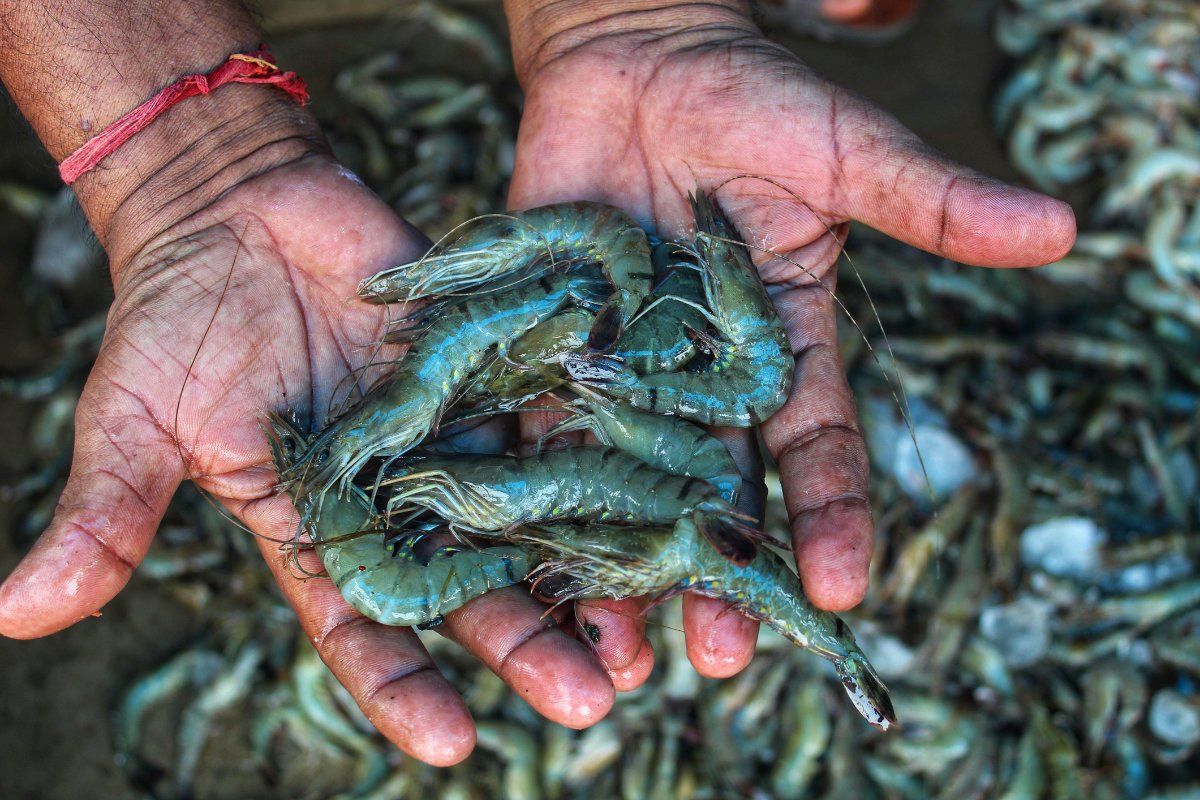Kerala Shrimp Industry Faces Huge Economic Loss with US Reciprocal Tariff


Anjali Ganga
Published on Mar 11, 2025, 06:09 PM | 5 min read
Thiruvananthapuram: With President Trump set to impose reciprocal tariffs on nations starting April 2, India, particularly the state of Kerala, faces significant economic challenges. A substantial portion of India’s shrimp exports to the United States—around 70 percent—comprises frozen shrimp, and approximately 30 percent of these exports are sourced from Kerala. Trump's decision to retaliate against countries with high tariffs on American goods will directly impact India’s shrimp industry, especially the shrimp farmers and labourers in Kerala.
Currently, India imposes a 30 percent tariff on shrimp products imported from the US, along with an additional 10 percent social welfare charge. In contrast, the US only imposes a 3.3 percent tariff on Indian shrimp imports. If the US proceeds with its proposed reciprocal tariffs, Indian shrimp will become more expensive in the American market, making it harder to compete with other major exporters like Ecuador and Indonesia.
While the US imports relatively little seafood from India compared to the vast quantity of shrimp India exports, the impact of the tariff increase will be far-reaching. Indian shrimp exporters have already appealed to Union Commerce Minister Piyush Goyal to consider waiving the 30 percent tariff, fearing devastating consequences of higher costs and reduced demand. Minister Goyal, who was in Kochi for the Invest Kerala Global Summit, has acknowledged the industry's concerns.
The potential chain reaction of these tariff changes extends beyond exporters to the thousands of shrimp farmers who depend on the industry for their livelihoods. As competition intensifies and the price of Indian shrimp rises in the US, many farmers will struggle to remain afloat. Shrimp hatcheries, peeling sheds, and warehouses across India are already facing severe labour -related challenges, with workers enduring harsh conditions and anti- labour policies. If the market price drops due to reduced demand, the income for exporters will dwindle, further impacting labour wages and creating economic uncertainty for families dependent on this sector. In Kerala alone, the shrimp farming sector employs around 217,052 workers, including farmers and laborers, many of whom are engaged in the cultivation of Litopenaeus Vannamei (Arpita Sharma, Suchismita Prusty, Rajiv Rathod, R. Arthi, Andrew Watterson & Lissandra Cavalli).
To put this into perspective, exports from the US to India during the 2024-25 period, up until November, amounted to just 3.16 million dollars, while India’s exports during the same period were worth 1.32 billion dollars. These figures illustrate the stark disparity between the two countries’ trade in seafood. In the previous fiscal year, US exports to India were 2.91 million dollars, compared to 0.81 billion dollars in Indian exports. Apart from shrimp, India also exports fish, cuttlefish, and squid to America. This entire industry will suffer the consequences of the reciprocal tariffs.
Exporters argue that waiving the tariffs will help prevent damage to families whose livelihoods depend on the shrimp industry. However, the reality is that a tariff- induced price hike will likely reduce demand, leading to fewer exports. Shrimp caught in the wild may have to be sold domestically at lower prices, causing a significant reduction in income for exporters. This price drop will create a domino effect, impacting labour charges and forcing workers in shrimp hatcheries, peeling sheds, and warehouses to bear the brunt of the economic downturn.
The imposition of reciprocal tariffs by the US will have devastating consequences for India’s shrimp export industry. Not only will it harm exporters and their ability to compete in global markets, but it will also jeopardise the livelihoods of thousands of farmers and labourers who depend on the industry for survival. As the government and exporters seek solutions, the spectre of economic hardship looms large for the families at the heart of India’s shrimp trade.

Kerala’s Shrimp Industry in Focus
Kerala has been exporting shrimp worth around 800 crore annually. In 2019, the Trump administration imposed a ban on wild-caught shrimp from India, accusing the country of not implementing Turtle Excluder Devices (TEDs) in fishing nets to protect sea turtles. The US claimed that India was not taking adequate measures to safeguard sea turtles, and that sea trawling was threatening their habitats. However, this claim was not backed by substantial data.
In India, most shrimp exported comes from shrimp farms rather than from wild-caught sources in rivers or the sea. Since 2019, India has suffered a revenue loss of 2,500 crore annually due to the ban. India was in the process of introducing TEDs in fishermen’s nets with the help of the Marine Products Exports Development Authority (MPEDA) when the Trump administration imposed reciprocal tariffs.
In response, India replaced traditional nets with thread nets, but the US argued that these were not up to international standards and refused to lift the ban. As a result, the price of shrimp in the American market, which was previously around 9 dollars per kilogram, has dropped to about 5 dollars following the US ban. This price reduction has also affected European markets, where the price has fallen to 5 dollars as well. Along with the European Union and the USA, Japan also implemented a ban on shrimp exports from India. Consequently, exports of Poovalan shrimp (brown shrimp) from India have shrunk, forcing sellers to sell domestically for as little as rupees 40 or 45 per kilogram.
The new reciprocal tariffs will likely worsen the situation, reducing the demand for Indian shrimp even further, forcing prices to drop even lower and further damaging Kerala's shrimp industry.









0 comments